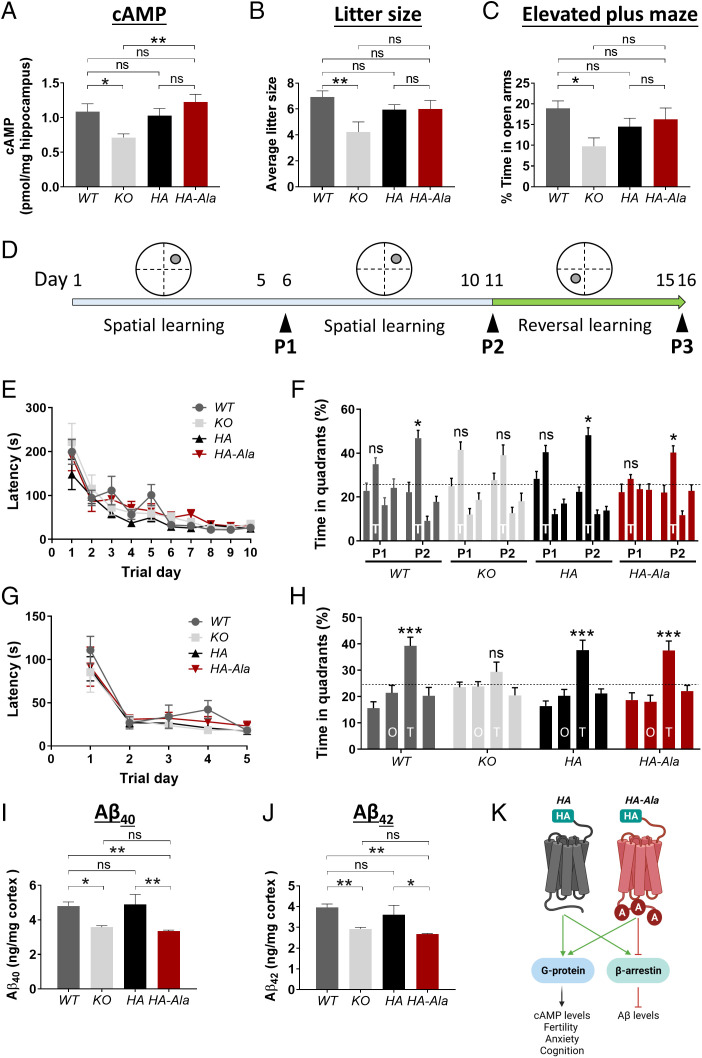Fig. 3.
G protein–biased GPR3 mice display reduced Aβ levels and intact cognitive function. (A) cAMP levels were assessed by ELISA in male WT, KO, HA, and HA-Ala mice at 4 mo of age. cAMP levels are reduced in KO mice and unaffected in HA-Ala mice (n = 7–9 mice/genotype; P = 0.0041). (B) Average litter size is reduced in KO (mice relative to WT, HA, and HA-Ala mice at 3–6 mo of age; n = 7–15 mice/genotype; P = 0.0137). (C) Anxiety levels were assessed by the elevated plus maze behavioral paradigm in WT, KO, HA, and HA-Ala at 4 mo of age. The results indicate that KO mice display elevated anxiety (n = 14–21 male and female mice/genotype; P = 0.0445). (D) Schematic of the MWM behavioral paradigm illustrates the study design. P1, P2, and P3 indicate the probe trials. (E–H) Spatial learning and reference memory (E), spatial memory and retrieval (F), reversal learning (G), and reversal memory (H) were determined in WT, KO, HA, and HA-Ala mice (n = 10 male and female mice/genotype). T in (F) represents the target quadrant; O and T in (H) represent the opposite quadrant and new target quadrant, respectively. The establishment of spatial memory, reversal memory, and memory retrieval were detected in WT, HA, HA-Ala, but not in KO mice. (I and J) Endogenous Aβ40 (I) and Aβ42 (J) are reduced in male KO and HA-Ala mice relative to control WT and HA mice at 4 mo of age (n = 8–10 mice/genotype; Aβ40, P = 0.0004; Aβ42, P = 0.0006). For all datasets, data are presented as mean ± SEM. ns, not significant; *P < 0.05, **P < 0.01, and ***P < 0.001 are determined by one-way ANOVA with a Tukey’s post hoc test. (K) The schematic diagram summarizes the physiological function of G protein–biased GPR3-mediated signaling in the HA and HA-Ala mouse models. Schematic created with BioRender.com.

